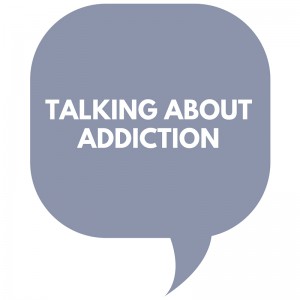Affirming Gender Nonconforming and Transgender Youth in the Justice System
By Jim Carlton, May 20 2019
Topics: News, lgbt, Juvenile Justice Reform
By Jim Carlton, May 20 2019
Topics: News, lgbt, Juvenile Justice Reform
By Anonymous, March 07 2018
Rounding up the latest news on youth justice reform and national public health.
Webinar on developing leadership and advocacy skills of at-risk LGBT youth.
Topics: News, lgbt, Juvenile Justice Reform
By Evan Elkin, December 21 2016
On December 13th, President Obama signed into law the 21st Century Cures Act. This sweeping legislative initiative is likely to be the final piece of legislation Barack Obama signs, and it is anything but an afterthought. The act is not without its critics, but some of the provisions of the 21st Century Cures ACT, for example those that pave the way for cross agency coordination, promise to reverberate in positive ways in the treatment field by accelerating the impact of research and innovation and catalyzing more collaborative work across government agencies and professional fields.
For organizations like Reclaiming Futures whose mission includes efforts to bring systems together in the delivery of services to youth and families, this new set of laws is good news. In this month’s Reclaiming Futures Newsletter, we draw your attention to this important piece of legislation and to a new blog post by Reclaiming Futures’ Bridget Murphy that highlights some of the key moving parts and implications that this important piece of legislation has for us in the field of substance use and behavioral health treatment.
By Evan Elkin, November 30 2016
In this month’s Reclaiming Futures newsletter, we draw your attention to a new report issued by US Surgeon General Vivek Murthy on November 17, 2016. The report is significant because it marks the first time a United States Surgeon General has taken such a clear and strong position that substance use and addiction should be viewed first and foremost as a public health issue. This is a position many advocates and organizations, like Reclaiming Futures, have taken for many years because we know firsthand the collateral consequences of continuing to view substance use and addiction as a moral failing and as a matter for the criminal justice system, and not the public health system and/or through a racially biased lens.
By Evan Elkin, October 25 2016
In this month’s Reclaiming Futures newsletter, we reflect on President Obama’s proclamation which, for the second year in a row, makes October National Youth Justice Awareness Month. President Obama’s focus on juvenile justice has been impressive, but it is important that the field does not become complacent as we contemplate what the future holds for juvenile justice reform.
By Evan Elkin, June 23 2016
It is widely known that arrest rates for adolescents have steadily declined over the past two decades. During this time, we’ve also seen a gradual shift in the nation’s juvenile justice practices away from the use of out-of-home placement for minor, non-violent offenses and toward more treatment-oriented, trauma-sensitive and community-based responses.
This, unfortunately, has not been the story for girls involved in the juvenile justice system. In fact, the proportion of girls involved at all stages of the juvenile justice continuum increased over this time period. Experts and policymakers agree that the system remains insensitive and ill-equipped to serve the needs of girls – particularly girls of color – at all levels of juvenile justice continuum.
While we are pleased to see the recent report by the Office of Juvenile Justice and Delinquency Prevention, meaningful reform focused on girls in the system is long overdue. In this month’s Reclaiming Futures Newsletter, we focus our attention on girls in the juvenile justice system and feature a new blog post by Bridget Murphy as well the latest Reclaiming Futures Data Brief, focused on gender trends in juvenile drug arrests.
Read the second Reclaiming Futures Data Brief here.
Topics: Juvenile Justice Reform, News, Reclaiming Futures
By Anonymous, June 08 2016
 On June 1, 2016, our Reclaiming Futures national executive director Evan Elkin spoke at Red Emma's in Baltimore for Open Society Institute-Baltimore's second event in their "Talking About Addiction" series. Elkin was accompanied on the panel by Dr. Hoover Adger from Johns Hopkins Children's Center and by Carin Callan Miller, who founded Save Our Children Peer Family Support. The conversation was moderated by Scott Nolen, director of OSI-Baltimore's Drug Addiction Treatment Program. A full room of community members joined them for the evening, including families affected by adolescent addiction.
On June 1, 2016, our Reclaiming Futures national executive director Evan Elkin spoke at Red Emma's in Baltimore for Open Society Institute-Baltimore's second event in their "Talking About Addiction" series. Elkin was accompanied on the panel by Dr. Hoover Adger from Johns Hopkins Children's Center and by Carin Callan Miller, who founded Save Our Children Peer Family Support. The conversation was moderated by Scott Nolen, director of OSI-Baltimore's Drug Addiction Treatment Program. A full room of community members joined them for the evening, including families affected by adolescent addiction.
Youth, Addiction and the Juvenile Justice System
Whereas the first "Talking About Addiction" event explored alternative law enforcement approaches to addiction, this event focused on youth, addiction, and the juvenile justice system. Despite public acknowledgment of the failures of the "War on Drugs," and an increased understanding of addiction as a public health issue rather than a criminal justice issue, OSI-Baltimore recognizes that research and policy around adolescent addiction are slow to reach the mainstream. Indeed, during the discussion, some attendees expressed frustration with how long addiction treatment reform is taking; OSI moderator Nolen suggested reassurance that the addiction paradigm is finally shifting.
By Anonymous, June 03 2016
 We round up the latest news on youth justice reform and national public health.
We round up the latest news on youth justice reform and national public health.
By Evan Elkin, May 26 2016
America is facing a heroin and opiate crisis. Heroin is increasingly popular – a report by the federal Substance Abuse and Mental Health Administration indicates that first-time heroin users doubled between 2006 and 2013 and data from the National Institute on Drug Abuse  indicate that deadly heroin overdoses increased sixfold in the years between 2001 and 2014. More than ever before, this crisis is addressed as a public health issue more than a public safety or criminal justice issue. This shift has sparked much public debate about why this is the case. Have we finally reached a tipping point as a society in our views of addiction as a health concern? Have irresponsible pain management prescription practices contributed to opening our eyes to one of the epidemic’s root causes? Some argue that race is a critical part of the story and feel that the shifting demographic - with an apparent increase in the proportion of white heroin and opiate users - is what has changed the perception of heroin abuse and finally mobilized policy makers. In this month’s Reclaiming Futures newsletter, we focused our attention on the issues surrounding the opiate crisis and featured a new blog post by Reclaiming Futures Program and Policy Analyst Bridget Murphy.
indicate that deadly heroin overdoses increased sixfold in the years between 2001 and 2014. More than ever before, this crisis is addressed as a public health issue more than a public safety or criminal justice issue. This shift has sparked much public debate about why this is the case. Have we finally reached a tipping point as a society in our views of addiction as a health concern? Have irresponsible pain management prescription practices contributed to opening our eyes to one of the epidemic’s root causes? Some argue that race is a critical part of the story and feel that the shifting demographic - with an apparent increase in the proportion of white heroin and opiate users - is what has changed the perception of heroin abuse and finally mobilized policy makers. In this month’s Reclaiming Futures newsletter, we focused our attention on the issues surrounding the opiate crisis and featured a new blog post by Reclaiming Futures Program and Policy Analyst Bridget Murphy.
By Bridget Murphy, March 30 2016
Deadline Approaching: Review and comment by April 11, 2016
Have you seen the Substance Abuse and Mental Health Services Administration’s (SAMHSA) proposed changes to 42 CFR Part 2, Confidentiality of Substance Use Disorder Patient Records? If not, we recommend taking a look and commenting as an individual, agency/organizational, or community collaboration. Feel free to share praises and/or critiques about the proposed changes with SAMHSA.
Here are some key highlights:
 ndividuals seeking substance use disorder treatment with protections for privacy and confidentiality. It was acknowledged that stigma and fear of potential repercussions (familial, employment; criminal) prevented people from seeking treatment.
ndividuals seeking substance use disorder treatment with protections for privacy and confidentiality. It was acknowledged that stigma and fear of potential repercussions (familial, employment; criminal) prevented people from seeking treatment.By Anonymous, March 04 2016
 Every week we round up the latest news on juvenile justice reform, adolescent substance use treatment, and teen mental health.
Every week we round up the latest news on juvenile justice reform, adolescent substance use treatment, and teen mental health.
Topics: News
By Anonymous, February 26 2016
 Every week we round up the latest news on juvenile justice reform, adolescent substance use treatment, and teen mental health.
Every week we round up the latest news on juvenile justice reform, adolescent substance use treatment, and teen mental health.
Topics: News
By Evan Elkin, February 16 2016

It took decades and a mountain of research evidence showing that incarcerating adolescents does little to prevent recidivism before policymakers took notice and began supporting measures to reduce incarceration and invest in community-based alternatives that prioritize treatment and support for youth and their families. Increasingly, over the past 15 years, we have seen the field come together around the common goal of creating a system for justice-involved youth that is more therapeutic, less punitive, less reliant on detention and incarceration, and more thoroughly grounded in research evidence and best practice. The catalyst for this paradigm shift has been a series of significant strategic investments by federal agencies and by major foundations like Annie E. Casey with its Juvenile Detention Alternatives Initiative, the MacArthur Foundation and its Models for Change, and the Robert Wood Johnson Foundation’s (RWJF) investment in Reclaiming Futures. These investments have all paid off in different ways to drive the field forward.
By Evan Elkin, January 26 2016
National evaluation shows that Reclaiming Futures generated $11 million in cost savings over one year; promoted better outcomes for teens and communities.
Five communities using the Reclaiming Futures model — a national public health and juvenile justice reform framework that promotes effective treatment practices — saved $11 million in one year. The national evaluation showed that juvenile drug courts implementing the Reclaiming Futures model saw significant reductions in crime and delinquency, which drove these notable fiscal savings.
Conducted by the University of Arizona’s Southwest Institute for Research on Women and funded by the Office of Juvenile Justice and Delinquency Prevention through an interagency agreement with the Library of Congress, research examined cost savings over a 12-month period at five juvenile drug courts around the country where the Reclaiming Futures model was implemented. Results show that the savings from implementing Reclaiming Futures are more than double its cost; net savings amounted to $84,569 per teen. Serving a total of 139 teens over the year of the study, these five communities saved more than $11 million in total. Further, average savings were even greater among participating teens with severe clinical problems, amounting to $232,109 in savings per teen.
Topics: Juvenile Justice Reform, News, Reclaiming Futures
By Anonymous, December 15 2015
 Girls are increasingly over-represented in the juvenile justice system; particularly girls living in poverty and young women of color, according to the Office of Juvenile Justice and Delinquency Prevention (OJJDP) in their recently released policy guidance: "Girls and the Juvenile Justice System." The significant increase of justice-involved girls over the past two decades was also demonstrated in September by Francine T. Sherman and Annie Balck in their "Gender Injustice" report; girls now account for almost 30 percent of youth arrests. OJJDP's new policy guidance calls for the identification and recognition of known risk factors - which lead girls to the justice system - and the implementation of developmentally informed approaches in order to reduce and divert the involvement of girls in the system. OJJDP's policy guidance aligns with the White House Council on Women and Girls' intention to advance equity for women and girls of color.
Girls are increasingly over-represented in the juvenile justice system; particularly girls living in poverty and young women of color, according to the Office of Juvenile Justice and Delinquency Prevention (OJJDP) in their recently released policy guidance: "Girls and the Juvenile Justice System." The significant increase of justice-involved girls over the past two decades was also demonstrated in September by Francine T. Sherman and Annie Balck in their "Gender Injustice" report; girls now account for almost 30 percent of youth arrests. OJJDP's new policy guidance calls for the identification and recognition of known risk factors - which lead girls to the justice system - and the implementation of developmentally informed approaches in order to reduce and divert the involvement of girls in the system. OJJDP's policy guidance aligns with the White House Council on Women and Girls' intention to advance equity for women and girls of color.
Identifying Risk Factors
OJJDP's policy guidance identifies a number of risk factors which lead to involvement of girls in the juvenile justice system, also referred to as the sexual abuse/trauma-to-prison pipeline:
Topics: Girls, Juvenile Justice Reform, News, Public Policy
By Anonymous, December 04 2015
 Every week Reclaiming Futures rounds up the latest news on juvenile justice reform, adolescent substance use treatment, and teen mental health.
Every week Reclaiming Futures rounds up the latest news on juvenile justice reform, adolescent substance use treatment, and teen mental health.
Most States Still House Some Youth in Adult Prisons, Report Says (Juvenile Justice Information Exchange)
A new report from Campaign for Youth Justice finds that most states still house youth in adult prisons, putting them at risk for abuse. Now is a good time to end this practice, according to the report, due to a recent decrease of youth housed in both adult and juvenile facilities.
Topics: News
By Anonymous, December 03 2015
 A new report, "Reducing Teen Substance Misuse: What Really Works," calls attention to the rising rate of teen overdose fatalities in the United States, the role of prescription painkillers, as well as research-based solutions for prevention and treatment. The report, supported by a grant from the Conrad N. Hilton Foundation, was authored and produced by Trust for America's Health (TFAH), a Washington D.C.-based nonprofit, non-partisan organization with a focus on public health policy and community prevention and treatment strategies.
A new report, "Reducing Teen Substance Misuse: What Really Works," calls attention to the rising rate of teen overdose fatalities in the United States, the role of prescription painkillers, as well as research-based solutions for prevention and treatment. The report, supported by a grant from the Conrad N. Hilton Foundation, was authored and produced by Trust for America's Health (TFAH), a Washington D.C.-based nonprofit, non-partisan organization with a focus on public health policy and community prevention and treatment strategies.
Significant Increase in Teen Overdose Fatalities
TFAH finds that youth drug overdose fatalities, among 12 to 25 year-olds, more than doubled in 35 states over the past ten years, particularly among young men and boys. Fatality rates for youth overdose more than doubled in 18 states, more than tripled in 12 states, and more than quadrupled in five states (Kansas, Montana, Ohio, Wisconsin and Wyoming). Analyses reveals that, while no state had a youth overdose death rate over 6.1 per 100,000 before 2001, 33 states were above 6.1 per 100,000 deaths by the year 2013.
By Anonymous, December 01 2015
 Every week Reclaiming Futures rounds up the latest news on juvenile justice reform, adolescent substance use treatment, and teen mental health.
Every week Reclaiming Futures rounds up the latest news on juvenile justice reform, adolescent substance use treatment, and teen mental health.
Teen Drug Overdose Death Rate Doubles Over Last Decade (Psychiatry Advisor)
Trust For America's Health released a new report with findings that the American drug overdose mortality rate has more than doubled over the last ten years, and especially among young men between the ages of 12 to 25 years old. Prescription drugs were found to be responsible for many of the overdoses, and were also found to be connected to heroin addictions in young people.
By Anonymous, November 25 2015
 President Obama has proclaimed November as "Native American Heritage Month." This is a time to celebrate the many significant historic and contemporary contributions of American Indians and Alaska Natives, a population of 5.4 million people in the United States, according to the U.S. Census Bureau. In the juvenile justice field, this month is not only a time to celebrate Native American heritage, but also an opportunity to make visible the unique youth justice challenges faced by Native American communities, and to highlight steps for collaboratively working with tribal communities to improve conditions for Native American youth and their families.
President Obama has proclaimed November as "Native American Heritage Month." This is a time to celebrate the many significant historic and contemporary contributions of American Indians and Alaska Natives, a population of 5.4 million people in the United States, according to the U.S. Census Bureau. In the juvenile justice field, this month is not only a time to celebrate Native American heritage, but also an opportunity to make visible the unique youth justice challenges faced by Native American communities, and to highlight steps for collaboratively working with tribal communities to improve conditions for Native American youth and their families.
Though 1990 was the first year "Native American Indian Heritage Month" was recognized as a national legal holiday, according to the U.S. Bureau of Indian Affairs, the pursuit of a holiday to celebrate heritage began in the early 20th century when Dr. Arthur C. Parker - a Seneca Indian and director of the Museum of Arts and Sciences in Rochester, New York - promoted a day to celebrate "First Americans." In May 1916, the first "American Indian Day" was declared by the state of New York, and many states observed a version of this day for years before official national recognition in 1990 for the month of November.
By Jenna Cerruti, November 20 2015
 Every week Reclaiming Futures rounds up the latest news on juvenile justice reform, adolescent substance use treatment, and teen mental health.
Every week Reclaiming Futures rounds up the latest news on juvenile justice reform, adolescent substance use treatment, and teen mental health.
States Look Beyond Incarceration to Rearrest Rates (Juvenile Justice Information Exchange)
The Council on State Governments reports that while juvenile arrest rates are down, rearrest rates are still high, sometimes reaching 80 percent in certain states. As a result, researchers and policymakers urge officials to look for ways to improve the lives of youth after they return to their communities, preventing further contact with the system.